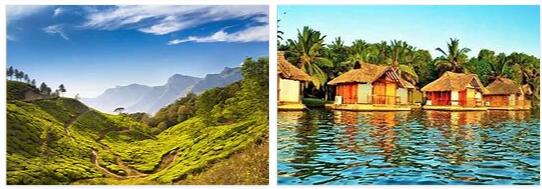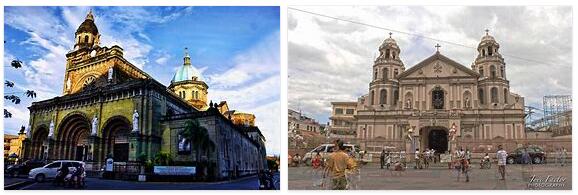Iran is a Middle Eastern country located in Southwest Asia, bordered by Iraq, Turkey, Azerbaijan, Turkmenistan, Afghanistan and Pakistan. It has an estimated population of over 81 million people and a gross domestic product (GDP) of $407 billion in 2018. Iran’s economy is largely dependent on oil and gas exports which account for 80% of total exports and 45% of government revenues.
According to cheeroutdoor, the Iranian economy has experienced years of economic stagnation due to international sanctions imposed on the country after the 1979 Islamic Revolution. These sanctions have had a significant effect on the Iranian economy with GDP growth dropping from 5-6% in the pre-sanction years to an average of -1.5% between 2012-2016. Despite this, Iran has still managed to maintain relatively high levels of economic growth with GDP growth estimated at 4.2% in 2018 and forecasted at 3.8% for 2019 according to World Bank estimates.
The Iranian government has implemented various policies aimed at promoting economic growth such as encouraging foreign investment through tax incentives; introducing regulations that promote competition; improving access to finance; boosting infrastructure development; increasing transparency etc., These efforts have helped attract foreign direct investment (FDI) into Iran which was estimated at US$ 13 billion in 2016 according to World Bank figures.
In addition to oil & gas exports, other important sectors in Iran’s economy include manufacturing; agriculture; services; tourism and transportation. The manufacturing sector accounts for around 20% of GDP and includes industrial production such as automobiles & auto parts; chemicals & petrochemicals; food processing etc., The agricultural sector employs around 15% of the population while contributing 8-9% towards GDP with major crops grown including wheat, barley, sugar beets, cotton etc., The services sector accounts for around 57% of GDP while tourism is also an important source of revenue with an estimated 8 million tourists visiting Iran annually according to World Tourism Organization estimates.
In conclusion, Iran’s economy remains largely dependent on oil & gas exports however it has still managed to maintain relatively high levels of economic growth despite international sanctions imposed against it over the years due to its implementation of pro-growth policies such as encouraging foreign investment through tax incentives etc., Furthermore other sectors such as manufacturing; agriculture and services are also playing important roles in driving economic output while also providing employment opportunities for many people within the country thus making it an attractive destination for both domestic and foreign investors alike.
Business
Since the 1970s, oil has been the basis of Iran’s business. More than 80 percent of the country’s export income comes from the oil.
During the 1970s, a dramatic social and economic change process was under way that included land reform, industrialization and some liberation for women. Economic growth rates were high and labor shortages prevailed. This process, however, gave rise to sharply increased social divisions.

According to COUNTRYAAH, the Islamic revolutionary government that seized power in 1979 radically changed Iran’s economic and social development strategies. The new leaders announced a focus on low growth rates, small-scale industrialization, traditional agriculture and strict control of the oil exports that are so important to Iran. The far-reaching central government of the economy, combined with reduced oil exports and widespread destruction of industries and infrastructure during the war against Iraq (1980-88), seriously hurt business.
During the 1990s, the oil industry destroyed during the war was rebuilt and state-owned companies were privatized. Since then, economic policy has shifted between liberal efforts and a more closed economic policy. The country has for a long time had substantial subsidies of, among other things, food and vehicle fuel. These have become increasingly expensive for the state to maintain and periodically rations have been introduced. Extensive welfare investments and the large subsidies have meant that the country has a rising budget deficit and high inflation. Together with poor growth outside the oil sector, this makes the country highly dependent on the world market price of oil. In 2010, a process was started to abolish the subsidies, with major popular protests as a result.
In 2006, the UN imposed financial sanctions on Iran to stop the country from renewing its nuclear program. Subsequently, the US and the EU imposed new sanctions for the same purpose. In 2015, the UN Security Council, Germany and Iran agreed to gradually lift the sanctions. The sanctions have hit the Iranian economy hard and have resulted in a price collapse in oil, but after the easing of the sanctions, greater hopes were tied to increased opportunities for foreign investment in the country.
In January 2016, the IAEA announced that Iran had fulfilled its commitment to dismantle its nuclear program, for example, Iran had closed a heavy water reactor and reduced its enriched uranium stockpile. As a result, the UN, the EU and the US lifted many of their sanctions against the country, for example, the EU’s oil embargo was lifted. Iran also regained access to the international financial sector and the country recovered frozen assets of about SEK 400 billion.
However, new sanctions were introduced in 2018 in connection with the US decision to withdraw from the Iran agreement.
Note: the capital city of Iran is Tehran with a population of 8,700,000 (2016 census). Other major cities include Mashad with a population of 3 000 000 , Isfahan with a population of 2 100 000 , karaj with a population of 1 900 000 , Shiraz with a population of 1 700 000 , Tabriz with a population of 1 600 000 , Qom with a population of 1 200 000 , Ahwaz with a population of 1 200 000 (Census 2016).
- Paulsourcing: Top 10 tips for doing business in Iran, covering country profile and market entry requirement.
Agriculture
Apart from the Caspian coastal country, Iran has few permanent permanent areas due to climate and topography. Of the total land area, 11 percent is agricultural land, of which just under half is irrigation. Repeated earthquakes have seriously damaged the irrigation systems in the country. The most important production areas are located in the north and west, where mainly cereals and fruit are produced. In the east and south dates are the most important crop. Agriculture is poorly developed and farming methods are primitive. Disagreement over agricultural policy, rapid population growth, precarious ownership conditions and inadequate communications contribute to agricultural stagnation.
Forestry
About 18 million ha (7 percent of the country’s area) are covered by forest. The most important forest areas are in the Zagros Mountains and the Caspian Sea Coast Mountains. The forest was nationalized during the Shah’s time, when forest management and new planting began. Some significance also has the collection of gum arabic and resins.
Fishing
Fishing, despite the country’s long coast, is not very significant, but the industry is developing, and catches have increased strongly in recent years. The largest catches are taken in the Persian Gulf. Casting in the Caspian Sea provides genuine caviar, which is largely exported.
Mineral
Iran’s oil reserves are among the world’s largest; in 2019, they are estimated to be 9 percent of the world’s known assets. Iran’s oil production has varied widely. The largest production occurred in the late 1970s, just before the revolution, when it produced 6 million barrels a day. Since then, the revolution, war and internal unrest have caused production to decline. However, in 2011 it reached 4.3 million barrels, but US and EU sanctions in connection with disputes over Iran’s nuclear technology affected exports, and production fell to 3.6 million barrels in 2013. In 2016, the IAEA announced that Iran had met its commitments to dismantle its nuclear energy program, and as a result, the UN, EU and US lifted many of its sanctions on the country, such as the EU’s oil embargo. As a result, oil production and exports increased again. In 2019 production was back at the same levels as before the sanctions. New sanctions were introduced by the United States in 2018 in connection with the country’s withdrawal from the Iran agreement.
The most important mining areas are located in Khuzestan, along the border with Iraq and in the Persian Gulf (offshore). Only a small part of the oil is refined in the country.
Iran also has the world’s second largest natural gas deposits, corresponding to 16 percent (2019) of the world’s known reserves. The gas bodies are more dispersed than the oil. The most important deposits are in Khuzestan and Khorasan as well as in the Elburz Mountains and on the coast of the Persian Gulf.
Otherwise, Iran is rich in a variety of minerals (copper, iron, coal, chromium, lead, zinc, uranium, phosphate, salt), but the deposits have so far been little used.
Energy
Abbreviated as IRN by abbreviationfinder.org, Iran’s rich deposits of oil and natural gas, along with government electricity subsidies, have contributed to Iran’s relatively high energy consumption. About 25 percent of the country’s villages are estimated to lack electricity, but an expansion is ongoing. Three quarters of the electricity generation comes from cogeneration plants and the majority of the remaining part comes from hydropower plants. Iran’s first nuclear power plant was commissioned in 2010.
Industry
The petrochemical and metal industries are the backbone of Iran’s industry. During the 1990s, Iran has established itself as the Middle East’s largest steel producer. The manufacturing industry includes the engineering and textile industries and the pharmaceutical industry. It is mainly concentrated in Tehran. Traditional products are mainly textiles (rugs), leather goods and food. Foreign investment was previously curbed by complicated bureaucracy, but during the 00s the bureaucracy was eased and more and more foreign investors have established themselves in the country.
Foreign trade
Crude oil and natural gas account for most of Iran’s exports. The government has for many years aimed at increasing exports of other than oil products, but so far there has been no great success. Iran is dependent on imports of technology and spare parts from Western Europe and China. The main exporting countries are China, India and South Korea, and the main importing countries are the United Arab Emirates, China and Turkey.



